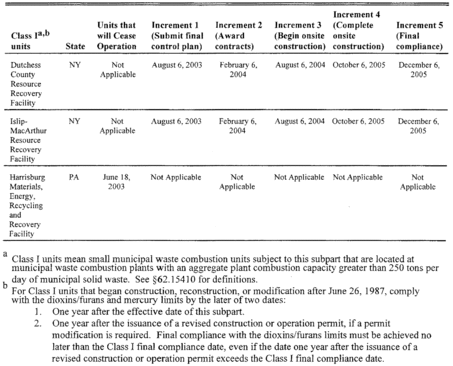Title 40
PART 62 APPENDIX
| State | MWC units |
|---|---|
| Alabama | Existing facilities with an
MWC unit capacity greater than 250 tons per day of municipal solid
waste at the following MWC sites: (a) Solid Waste Disposal Authority of the City of Huntsville, Alabama. |
| Florida | Existing MWC units with capacity to combust more than 250 tons per day of municipal solid waste. |
| Georgia | Existing facilities with a MWC unit capacity greater than 250 tons per day of municipal solid waste at the following MWC sites: |
| (a) Savannah Energy Systems Company, Savannah, Georgia. | |
| Illinois | Existing MWC units located at Robbins Resource Recovery Center, Robbins, Illinois. |
| Maine | Existing facilities with an
MWC unit capacity greater than 250 tons per day of municipal solid
waste at the following MWC sites: (a) Penobscot Energy Recovery Company, Orrington, Maine. (b) Maine Energy Recovery Company, Biddeford, Maine. (c) Regional Waste Systems, Inc., Portland, Maine. |
| Maryland | Existing MWC facilities with an MWC unit capacity greater than 250 tons per day of municipal solid waste. |
| Minnesota | All MWC units with unit capacities greater than 93.75 million British thermal units per hour on a heat input basis (250 tons per day) located in Minnesota. |
| New York | Existing MWC units with capacity to combust more than 250 tons per day of municipal solid waste. |
| Oklahoma | Existing MWC facilities with
an MWC unit capacity greater than 250 tons per day of municipal
solid waste at the following MWC site: Ogden-Martin Systems of Tulsa, Incorporated, 2122 South Yukon Avenue, Tulsa, Oklahoma. |
| Oregon | Existing facilities at the following MWC sites: |
| (a) Ogden Martin Systems, Marion County, Oregon. | |
| (b) Coos County, Coos Bay, Oregon. | |
| Pennsylvania | Existing MWC facilities with
an MWC unit capacity greater than 250 tons per day of municipal
solid waste at the following MWC site: (a) American Ref-fuel of Delaware Valley, LP (formerly Delaware County Resource Recovery facility), City of Chester, PA. (b) Harrisburg Materials, Energy, Recycling and Recovery Facility, City of Harrisburg, PA. (c) Lancaster County Solid Waste Management Authority, Conoy Township, Lancaster County, PA. (d) Montenay Montgomery Limited Partnership, Plymouth Township, Montgomery County, PA. (e) Wheelabrator Falls, Inc., Falls Township, Bucks County, PA. (f) York County Solid Waste and Refuse Authority, York, PA. |
| South Carolina | Existing facilities with a MWC unit capacity greater than 250 tons per day of municipal solid waste at the following MWC sites: |
| (a) Foster Wheeler Charleston Resource Recovery Facility, Charleston, South Carolina. | |
| Tennessee | Existing MWC units with capacity to combust more than 250 tons per day of municipal solid waste. |
1 Notwithstanding the exclusions in table 1 of this subpart, this subpart applies to affected facilities not regulated by an EPA approved and currently effective State or Tribal plan.
Table 2 to Subpart FFF of Part 62 - Nitrogen Oxides Requirements for Affected Facilities
40:10.0.1.1.2.58.971.11.10 :
Table 2 to Subpart FFF of Part 62 - Nitrogen Oxides Requirements for Affected Facilities| Municipal waste combustor technology | Nitrogen oxides emission limit (parts per million by volume) a |
|---|---|
| Mass burn waterwall | 205. |
| Mass burn rotary waterwall | 250. |
| Refuse-derived fuel combustor | 250. |
| Fluidized bed combustor | 180. |
| Mass burn refractory combustors | No limit. |
a Corrected to 7 percent oxygen, dry basis.
Table 3 to Subpart FFF of Part 62 - Municipal Waste Combustor Operating Requirements
40:10.0.1.1.2.58.971.11.11 :
Table 3 to Subpart FFF of Part 62 - Municipal Waste Combustor Operating Requirements| Municipal waste combustor technology | Carbon monoxide emissions level (parts per million by volume) a | Averaging time (hrs) b |
|---|---|---|
| Mass burn waterwall | 100 | 4 |
| Mass burn refractory | 100 | 4 |
| Mass burn rotary refractory | 100 | 24 |
| Mass burn rotary waterwall | 250 | 24 |
| Modular starved air | 50 | 4 |
| Modular excess air | 50 | 4 |
| Refuse-derived fuel stoker | 200 | 24 |
| Fluidized bed, mixed fuel (wood/refuse-derived fuel) | 200 | c 24 |
| Bubbling fluidized bed combustor | 100 | 4 |
| Circulating fluidized bed combustor | 100 | 4 |
| Pulverized coal/refuse-derived fuel mixed fuel-fired combustor | 150 | 4 |
| Spreader stoker coal/refuse-derived fuel mixed fuel-fired combustor | 200 | 24 |
a Measured at the combustor outlet in conjunction with a measurement of oxygen concentration, corrected to 7 percent oxygen, dry basis. Calculated as an arithmetic average.
b Averaging times are 4-hour or 24-hour block averages.
c 24-hour block average, geometric mean.
Table 4 to Subpart FFF of Part 62 - Generic Compliance Schedule and Increments of Progress (Pre-1987 MWCs) a b
40:10.0.1.1.2.58.971.11.12 :
Table 4 to Subpart FFF of Part 62 - Generic Compliance Schedule and Increments of Progress (Pre-1987 MWCs) a b| Affected facilities | Increment 1 Submit final control plan |
Increment 2 Award contracts |
Increment 3 Begin on-site construction |
Increment 4 Complete on-site construction |
Increment 5 Final compliance |
|---|---|---|---|---|---|
| Affected facilities that commenced construction, modification, or reconstruction on or before June 26, 1987 (All pollutants) | January 11, 1999 | 05/18/99 | 11/16/99 | 11/19/00 | 12/19/00 |
a Table 4 or 5 of this subpart applies to MWC units subject to the Federal plan except those with site-specific compliance schedules shown in Table 6 of this subpart.
b As an alternative to this schedule, the owner or operator may close the affected facility by December 19, 2000, complete the retrofit while the affected facility is closed, and achieve final compliance upon restarting. See §§ 62.14108(c), 62.14108(d), and 62.14109(i) of this subpart.
Table 5 to Subpart FFF of Part 62 - Generic Compliance Schedules and Increments of Progress
40:10.0.1.1.2.58.971.11.13 :
Table 5 to Subpart FFF of Part 62 - Generic Compliance Schedules and Increments of Progress[Post-1987 MWCs] a b
| Affected facilities | Increment 1 Submit final control plan |
Increment 2 Award contracts |
Increment 3 Begin on-site construction |
Increment 4 Complete on-site construction |
Increment 5 Final compliance |
|---|---|---|---|---|---|
| Affected facilities that commenced construction modification, or reconstruction after June 26, 1987: | |||||
| 1. Emission limits for Hg, dioxin/furan | NA c | NA c | NA c | NA c | 11/12/99 or 1 year after permit issuance d e |
| 2. Emission limits for SO2, HCl, PM, Pb, Cd, opacity CO, NOX | January 11, 1999 | 05/18/99 | 11/16/99 | 11/19/00 | 12/19/00. |
a Table 4 or 5 of this subpart applies to MWC units subject to the Federal plan except those with site-specific compliance schedules shown in table 6 of this subpart.
b As an alternative to this schedule, the unit may close by December 19, 2000, complete retrofit while closed, and achieve final compliance upon restarting. See §§ 62.14108(c), 62.14108(d), and 62.14109(i) of this subpart.
c Because final compliance is achieved in 1 year, no increments of progress are required.
d Permit issuance is issuance of a revised construction permit or revised operating permit, if a permit modification is required to retrofit controls.
e Final compliance must be achieved no later than December 19, 2000, even if the date “1 year after permit issuance” exceeds December 19, 2000.
Table 6 to Subpart FFF of Part 62 - Site-Specific Compliance Schedules and Increments of Progress a
40:10.0.1.1.2.58.971.11.14 :
Table 6 to Subpart FFF of Part 62 - Site-Specific Compliance Schedules and Increments of Progress a| Affected facilities at the following MWC sites | City, State | Increment 1 Submit final control plan |
Increment 2 Award contracts |
Increment 3 Begin on-site construction |
Increment 4 Complete on-site construction |
Increment 5 Final compliance c |
|---|---|---|---|---|---|---|
| Stanislaus Resource Recovery Facility | Crows Landing, California | January 11, 1999 | 01/19/00 | 05/19/00 | 11/19/00 | 12/19/00 |
| Southeast Resource Recovery Facility | Long Beach, California | January 11, 1999 | 04/30/99 | 10/31/99 | 04/30/00 | 12/19/00 |
| All large MWC units | Maine | January 11, 1999 | 01/01/99 | 07/01/99 | 09/01/00 | 12/19/00 |
| Baltimore Resco | Baltimore, Maryland | January 11, 1999 | January 11, 1999 | January 11, 1999 | 09/01/00 | 12/19/00 |
| All large MWC units | New Jersey b | January 11, 1999 | 05/18/99 | 11/14/99 | 11/19/00 | 12/19/00 |
| American Ref-Fuel | Delaware County, Pennsylvania | 11/01/98 | 05/18/99 | 11/14/99 | 11/19/00 | 12/19/00 |
| Montenay Energy Resource | Montgomery County, Pennsylvania | 11/01/98 | 05/18/99 | 11/14/99 | 11/19/00 | 12/19/00 |
| I-95 Energy/Resource Recovery Facility | Lorton, Virginia | January 11, 1999 | 10/15/99 | 03/01/00 | 11/19/00 | 12/19/00 |
| New Hanover County, Unit 3A | Wilmington, North Carolina | 09/15/99 | 03/01/00 | 07/01/00 | 11/19/00 | 12/19/00 |
a These schedules have been reviewed and determined to be acceptable by EPA.
b This schedule applies to HC1 SO2, PM, Pb, Cd, CO, and NOX. However, owners and operators of large MWC units in New Jersey have the option of reserving the portion of their control plan that addresses NOX. Owners and operators must submit the reserved portion to EPA by December 15, 1999.
c The owner or operator of an affected facility that began construction, modification, or reconstruction after June 26, 1987 must achieve final compliance with the mercury and dioxins/furans limits within 1 year after promulgation of subpart FFF (i.e., by 11/12/99) or 1 year after permit issuance. Permit issuance is issuance of a revised construction permit or revised operating permit if a permit modification is required to retrofit controls. Final compliance must be achieved no later than December 19, 2000, even if the date “1 year after permit issuance” exceeds December 19, 2000.
Table 1 to Subpart GGG of Part 62 - States That Have an Approved and Effective State Plan a
40:10.0.1.1.2.59.971.8.15 :
Table 1 to Subpart GGG of Part 62 - States That Have an Approved and Effective State Plan a| State plan | Effective date of state plan b |
|---|---|
| Alabama | 12/07/98 |
| Allegheny County, Pennsylvania | 04/16/99 |
| Arizona | 11/19/99 |
| California | 11/22/99 |
| Colorado | 09/28/98 |
| Delaware | 11/16/99 |
| Florida | 08/03/99 |
| Georgia | 01/12/99 |
| Illinois | 01/22/99 |
| Iowa | 06/22/98 |
| Kansas | 05/19/98 |
| Kentucky | 06/21/99 |
| Louisiana | 10/28/97 |
| Maryland | 11/8/99 |
| Minnesota | 09/25/98 |
| Missouri | 06/23/98 |
| Montana | 09/08/98 |
| Nashville, Tennessee | 02/16/99 |
| Nebraska | 06/23/98 |
| Nevada | 11/19/99 |
| New Mexico | 02/10/98 |
| New York | 09/17/99 |
| North Dakota | 02/13/98 |
| Ohio | 10/06/98 |
| Oklahoma | 05/18/99 |
| Oregon | 08/25/98 |
| South Carolina | 10/25/99 |
| South Dakota | 08/02/99 |
| Tennessee | 11/29/99 |
| Texas | 08/16/99 |
| Utah | 03/16/98 |
| Wyoming | 07/31/98 |
a This table is provided as a matter of convenience and is not controlling in determining whether a MSW landfill is subject to the Federal plan. A MSW landfill is subject to this Federal plan if it commenced construction before May 30, 1991 and has not been modified or reconstructed on or after that date and is not covered by an approved and currently effective State or Tribal plan.
b The State plan is expected to become effective on the date indicated. However, if the State plan does not become effective on the date indicated, the Federal plan applies until the State plan becomes effective.
Table 2 to Subpart GGG of Part 62 - States That Submitted a Negative Declaration Letter a
40:10.0.1.1.2.59.971.8.16 :
Table 2 to Subpart GGG of Part 62 - States That Submitted a Negative Declaration Letter a| State, locality, or portion of Indian country | Date of negative declaration |
|---|---|
| District of Columbia | 09/11/97 |
| New Hampshire | 07/22/98 |
| Philadelphia, Pennsylvania | 02/27/96 |
| Rhode Island | 05/27/98 |
| Vermont | 08/20/96 |
a A MSW landfill with a design capacity equal to or greater than 2.5 million megagrams and 2.5 million cubic meters located in an area for which a negative declaration letter was submitted is subject to the Federal plan, notwithstanding the negative declaration letter and this table 2.
Table 3 to Subpart GGG of Part 62 - Generic Compliance Schedule and Increments of Progress a
40:10.0.1.1.2.59.971.8.17 :
Table 3 to Subpart GGG of Part 62 - Generic Compliance Schedule and Increments of Progress a| Increment | Date |
|---|---|
| Increment 1 - Submit final control plan | 1 year after initial NMOC emission rate report or the first annual emission rate report showing NMOC emissions ≥50 Mg/yr. b |
| Increment 2 - Award Contracts | 20 months after initial NMOC emission rate report or the first annual emission rate report showing NMOC emissions ≥50 Mg/yr. b |
| Increment 3 - Begin on-site construction | 24 months after initial NMOC emission rate report or the first annual emission rate report showing NMOC emissions ≥50 Mg/yr. b |
| Increment 4 - Complete on-site construction | 30 months after initial NMOC emission rate report or the first annual emission rate report showing NMOC emissions ≥50 Mg/yr. b |
| Increment 5 - Final compliance | 30 months after initial NMOC emission rate report or the first annual emission rate report showing NMOC emissions ≥50 Mg/yr. b |
a Table 3 of subpart GGG applies to landfills with design capacities ≥2.5 million megagrams and 2.5 million cubic meters that are subject to this subpart except those with site-specific compliance schedules shown in table 4 of subpart GGG.
b NMOC = nonmethane organic compounds Mg/yr = megagrams per year
Table 4 to Subpart GGG of Part 62 - Site-Specific Compliance Schedules and Increments of Progress [Reserved]
40:10.0.1.1.2.59.971.8.18 :
Table 4 to Subpart GGG of Part 62 - Site-Specific Compliance Schedules and Increments of Progress [Reserved]Table 1 to Subpart HHH of Part 62 - Emission Limits for Small Rural, Small, Medium, and Large HMIWI
40:10.0.1.1.2.60.982.41.19 :
Table 1 to Subpart HHH of Part 62 - Emission Limits for Small Rural, Small, Medium, and Large HMIWI| For the air pollutant | You must meet this emissions limit | With these
units (7 percent oxygen, dry basis) |
Using this averaging time a |
And determining compliance using this method b | |||
|---|---|---|---|---|---|---|---|
| HMIWI size | |||||||
| Small rural | Small | Medium | Large | ||||
| Particulate matter | 87 (0.038) | 66 (0.029) | 46 (0.020) c 34 (0.015) d |
25 (0.011) | Milligrams per dry standard cubic meter (grains per dry standard cubic foot) | 3-run average (1-hour minimum sample time per run) | EPA Reference Method 5 of appendix A-3 of part 60, or EPA Reference Method M 26A or 29 of appendix A-8 of part 60 |
| Carbon monoxide | 20 | 20 | 5.5 | 11 | Parts per million by volume | 3-run average (1-hour minimum sample time per run) | EPA Reference Method 10 or 10B of appendix A-4 of part 60 |
| Dioxins/furans | 240 (100) or 5.1 (2.2) | 16 (7.0) or 0.013 (0.0057) | 0.85 (0.37) or 0.020 (0.0087) | 9.3 (4.1) or 0.054 (0.024) | Nanograms per dry standard cubic meter total dioxins/furans (grains per billion dry standard cubic feet) or nanograms per dry standard cubic meter TEQ (grains per billion dry standard cubic feet) | 3-run average (4-hour minimum sample time per run) | EPA Reference Method 23 of appendix A-7 of part 60 |
| Hydrogen chloride | 810 | 44 c 15 d |
7.7 | 6.6 | Parts per million by volume | 3-run average (1-hour minimum sample time per run) | EPA Reference Method 26 or 26A of appendix A-8 of part 60 |
| Sulfur dioxide | 55 | 4.2 | 4.2 | 9.0 | Parts per million by volume | 3-run average (1-hour minimum sample time per run) | EPA Reference Method 6 or 6C of appendix A-4 of part 60 |
| Nitrogen oxides | 130 | 190 | 190 | 140 | Parts per million by volume | 3-run average (1-hour minimum sample time per run) | EPA Reference Method 7 or 7E of appendix A-4 of part 60 |
| Lead | 0.50 (0.22) | 0.31 (0.14) | 0.018 (0.0079) | 0.036 (0.016) | Milligrams per dry standard cubic meter (grains per thousand dry standard cubic feet) | 3-run average (1-hour minimum sample time per run) | EPA Reference Method 29 of appendix A-8 of part 60 |
| Cadmium | 0.11 (0.048) | 0.017 (0.0074) | 0.013 (0.0057) | 0.0092 (0.0040) | Milligrams per dry standard cubic meter (grains per thousand dry standard cubic feet) | 3-run average (1-hour minimum sample time per run) | EPA Reference Method 29 of appendix A-8 of part 60 |
| Mercury | 0.051 (0.0022) | 0.014 (0.0061) | 0.025 (0.011) | 0.018 (0.0079) | Milligrams per dry standard cubic meter (grains per thousand dry standard cubic feet) | 3-run average (1-hour minimum sample time per run) | EPA Reference Method 29 of appendix A-8 of part 60 |
a Except as allowed under §§ 62.14452(o)-(q) for HMIWI equipped with CEMS or continuous automated sampling systems.
b Does not include CEMS, continuous automated sampling systems, and approved alternative non-EPA test methods allowed under § 62.14452(d) and (m).
c Limits for those HMIWI for which construction or modification was commenced according to § 62.14400(a)(2)(i).
d Limits for those HMIWI for which construction or modification was commenced according to § 62.14400(a)(2)(ii).
Table 2 to Subpart HHH of Part 62 - Toxic Equivalency Factors
40:10.0.1.1.2.60.982.41.20 :
Table 2 to Subpart HHH of Part 62 - Toxic Equivalency Factors| Dioxin/furan congener | Toxic equivalency factor |
|---|---|
| 2,3,7,8-tetrachlorinated dibenzo-p-dioxin | 1 |
| 1,2,3,7,8-pentachlorinated dibenzo-p-dioxin | 1 |
| 1,2,3,4,7,8-hexachlorinated dibenzo-p-dioxin | 0.1 |
| 1,2,3,7,8,9-hexachlorinated dibenzo-p-dioxin | 0.1 |
| 1,2,3,6,7,8-hexachlorinated dibenzo-p-dioxin | 0.1 |
| 1,2,3,4,6,7,8-heptachlorinated dibenzo-p-dioxin | 0.01 |
| Octachlorinated dibenzo-p-dioxin | 0.0003 |
| 2,3,7,8-tetrachlorinated dibenzofuran | 0.1 |
| 2,3,4,7,8-pentachlorinated dibenzofuran | 0.3 |
| 1,2,3,7,8-pentachlorinated dibenzofuran | 0.03 |
| 1,2,3,4,7,8-hexachlorinated dibenzofuran | 0.1 |
| 1,2,3,6,7,8-hexachlorinated dibenzofuran | 0.1 |
| 1,2,3,7,8,9-hexachlorinated dibenzofuran | 0.1 |
| 2,3,4,6,7,8-hexachlorinated dibenzofuran | 0.1 |
| 1,2,3,4,6,7,8-heptachlorinated dibenzofuran | 0.01 |
| 1,2,3,4,7,8,9-heptachlorinated dibenzofuran | 0.01 |
| Octachlorinated dibenzofuran | 0.0003 |
Table 3 to Subpart HHH of Part 62 - Operating Parameters To Be Monitored and Minimum Measurement and Recording Frequencies
40:10.0.1.1.2.60.982.41.21 :
Table 3 to Subpart HHH of Part 62 - Operating Parameters To Be Monitored and Minimum Measurement and Recording Frequencies| Operating parameters to be monitored |
Minimum frequency | HMIWI | |||||
|---|---|---|---|---|---|---|---|
| Data measurement | Data recording | HMIWI with combustion control only | HMIWI with dry scrubber followed by FF | HMIWI with wet scrubber | HMIWI with dry scrubber followed by FF and wet scrubber | HMIWI with SNCR system | |
| Maximum operating parameters: | |||||||
| Maximum charge rate | Once per charge | Once per charge | ✓ | ✓ | ✓ | ✓ | ✓ |
| Maximum FF inlet temperature | Continuous | Once per minute | ✓ | ✓ | |||
| Maximum flue gas temperature | Continuous | Once per minute | ✓ | ✓ | |||
| Minimum operating parameters: | |||||||
| Minimum secondary chamber temperature | Continuous | Once per minute | ✓ | ✓ | ✓ | ✓ | ✓ |
| Minimum dioxin/furan sorbent flow rate | Hourly | Once per hour | ✓ | ✓ | |||
| Minimum HCl sorbent flow rate | Hourly | Once per hour | ✓ | ✓ | |||
| Minimum mercury (Hg) sorbent flow rate | Hourly | Once per hour | ✓ | ✓ | |||
| Minimum pressure drop across the wet scrubber or minimum horsepower or amperage to wet scrubber | Continuous | Once per minute | ✓ | ✓ | |||
| Minimum scrubber liquor flow rate | Continuous | Once per minute | ✓ | ✓ | |||
| Minimum scrubber liquor pH | Continuous | Once per minute | ✓ | ✓ | |||
| Minimum reagent flow rate | Hourly | Once per hour | ✓ | ||||
Table 1 to Subpart III of Part 62 - Emission Limitations
40:10.0.1.1.2.61.997.69.22 :
Table 1 to Subpart III of Part 62 - Emission Limitations| For the air pollutant | You must meet this emission limitation a | Using this averaging time | And determining compliance using this method |
|---|---|---|---|
| Cadmium | 0.004 milligrams per dry standard cubic meter | 3-run average (1 hour minimum sample time per run) | Performance test (Method 29 of appendix A of part 60). |
| Carbon monoxide | 157 parts per million by dry volume | 3-run average (1 hour minimum sample time per run) | Performance test (Method 10, 10A, or 10B, of appendix A of part 60). |
| Dioxins/furans (toxic equivalency basis) | 0.41 nanograms per dry standard cubic meter | 3-run average (4 hour minimum sample time per run) | Performance test (Method 23 of appendix A of part 60). |
| Hydrogen chloride | 62 parts per million by dry volume | 3-run average (1 hour minimum sample time per run) | Performance test (Method 26A of appendix A of part 60). |
| Lead | 0.04 milligrams per dry standard cubic meter | 3-run (1 hour minimum sample time per run) | Performance test (Method 29 of appendix A of part 60). |
| Mercury | 0.47 milligrams per dry standard cubic meter | 3-run average (1 hour minimum sample time per run) | Performance test (Method 29 of appendix A of part 60). |
| Opacity | 10 percent | 6-minute averages | Performance test (Method 9 of appendix A of part 60). |
| Oxides of nitrogen | 388 parts per million by dry volume | 3-run average (1 hour minimum sample time per run) | Performance test (Methods 7, 7A, 7C, 7D, or 7E of appendix A of part 60). |
| Particulate matter | 70 milligrams per dry standard cubic meter | 3-run average (1 hour minimum sample time per run) | Performance test (Method 5 or 29 of appendix A of part 60). |
| Sulfur dioxide | 20 parts per million by dry volume | 3-run average (1 hour minimum sample time per run) | Performance test (Method 6 or 6c of appendix A of part 60). |
a All emission limitations (except for opacity) are measured at 7 percent oxygen, dry basis at standard conditions.
Table 2 to Subpart III of Part 62 - Operating Limits for Wet Scrubbers
40:10.0.1.1.2.61.997.69.23 :
Table 2 to Subpart III of Part 62 - Operating Limits for Wet Scrubbers| For these operating parameters | You must establish these operating limits | And monitor using these minimum frequencies | ||
|---|---|---|---|---|
| Data measurement | Data recording | Averaging time | ||
| Charge rate | Maximum charge rate | Continuous | Every hour | 1. Daily (batch units) 2. 3-hour rolling (continuous and intermittent units) a |
| Pressure drop across the wet scrubber or amperage to wet scrubber | Minimum pressure drop or amperage | Continuous | Every 15 minutes | 3-hour rolling a |
| Scrubber liquor flow rate | Minimum flow rate | Continuous | Every 15 minutes | 3-hour rolling a |
| Scrubber liquor pH | Minimum pH | Continuous | Every 15 minutes | 3-hour rolling a |
a Calculated each hour as the average of the previous 3 operating hours.
Table 3 to Subpart III of Part 62 - Toxic Equivalency Factors
40:10.0.1.1.2.61.997.69.24 :
Table 3 to Subpart III of Part 62 - Toxic Equivalency Factors| Dioxin/furan congener | Toxic equivalency factor |
|---|---|
| A. 2,3,7,8-tetrachlorinated dibenzo-p-dioxin | 1 |
| B. 12,3,7,8-pentachlorinated dibenzo-p-dioxin | 0.5 |
| C. 1,2,3,4,7,8-hexachlorinated dibenzo-p-dioxin | 0.1 |
| D. 1,2,3,7,8,9-hexachlorinated dibenzo-p-dioxin | 0.1 |
| E. 12,3,6,7,8-hexachlorinated dibenzo-p-dioxin | 0.1 |
| F. 1,2,3,4,6,7,8-heptachlorinated dibenzo-p-dioxin | 0.01 |
| G. 0ctachlorinated dibenzo-p-dioxin | 0.001 |
| H. 2,3,7,8-tetrachlorinated dibenzofuran | 0.1 |
| I. 2,3,4,7,8-pentachlorinated dibenzofuran | 0.5 |
| J. 1,2,3,7,8-pentachlorinated dibenzofuran | 0.05 |
| K. 1,2,3,4,7,8-hexachlorinated dibenzofuran | 0.1 |
| L. 1,2,3,6,7,8-hexachlorinated dibenzofuran | 0.1 |
| M. 1,2,3,7,8,9-hexachlorinated dibenzofuran | 0.1 |
| N. 2,3,4,6,7,8-hexachlorinated dibenzofuran | 0.1 |
| O. 1,2,3,4,6,7,8-heptachlorinated dibenzofuran | 0.01 |
| P. 1,2,3,4,7,8,9-heptachlorinated dibenzofuran | 0.01 |
| Q. 0ctachlorinated dibenzofuran | 0.001 |
Table 4 to Subpart III of Part 62 - Summary of Reporting Requirements a
40:10.0.1.1.2.61.997.69.25 :
Table 4 to Subpart III of Part 62 - Summary of Reporting Requirements a| Report | Due date | Contents | Reference |
|---|---|---|---|
| A. Waste Management Plan | No later than April 5, 2004 | Waste management plan | § 62.14715. |
| B. Initial Test Report | No later than 60 days following the initial performance test | 1. Complete test report for
the initial performance test 2. The values for the site-specific operating limits. 3. Installation of bag leak detection systems for fabric filters. |
§ 62.14720. |
| C. Annual report | No later than 12 months following the submission of the initial test report. Subsequent reports are to be submitted no more than 12 months following the previous report | 1. Name and address 2. Statement and signature by responsible official. 3. Date of report. 4. Values for the operating limits. 5. If no deviations or malfunctions were reported, a statement that no deviations occurred during the reporting period. 6. Highest recorded 3-hour average and the lowest 3-hour average, as applicable, for each operating parameter recorded for the calendar year being reported |
§§ 62.14725 and 62.14730. Subsequent reports are to be submitted no more than 12 months following the previous report. |
| 7. Information for deviations
or malfunctions recorded under § 62.14700(b)(6) and (c) through
(e) 8. If a performance test was conducted during the reporting period, the results of the test. 9. If a performance test was not conducted during the reporting period, a statement that the requirements of § 62.14680(a) or (b) were met. 10. Documentation of periods when all qualified CISWI unit operators were unavailable for more than 8 hours but less than 2 weeks. |
|||
| D. Emission Limitation or Operating Limit Deviation Report | By August 1 of that year for
data collected during the first half of the calendar year By February 1 of the following year for data collected during the second half of the calendar year. |
1. Dates and times of
deviations 2. Averaged and recorded data for these dates. 3. Duration and causes for each deviation and the corrective actions taken. 4. Copy of operating limit monitoring data and any test reports. 5. Dates, times, and causes for monitor downtime incidents. 6. Whether each deviation occurred during a period of startup, shutdown, or malfunction. |
§§ 62.14735 and 62.14740. |
| E. Qualified Operator Deviation Notification | Within 10 days of deviation | 1. Statement of cause of
deviation. 2. Description of efforts to have an accessible qualified operator. 3. The date a qualified operator will be accessible. |
§ 62.14745(a)(1). |
| F. Qualified Operator Deviation Status Report | Every 4 weeks following deviation. | 1. Description of efforts to
have an accessible qualified operator 2. The date a qualified operator will be accessible. 3. Request for approval to continue operation. |
§ 62.14745(a)(2). |
| G. Qualified Operator Deviation Notification of Resumed Operation | Prior to resuming operation | Notification that you are resuming operation | § 62.14745(b). |
a This table is only a summary, see the referenced sections of the rule for the complete requirements.
Table 1 to Subpart JJJ of Part 62 - Generic Compliance Schedules and Increments of Progress
40:10.0.1.1.2.62.1014.84.26 :
Table 1 to Subpart JJJ of Part 62 - Generic Compliance Schedules and Increments of Progress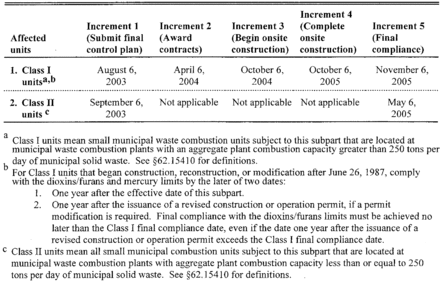
Table 2 to Subpart JJJ of Part 62 - Class I Emission Limits for Existing Small Municipal Waste Combustion Limits
40:10.0.1.1.2.62.1014.84.27 :
Table 2 to Subpart JJJ of Part 62 - Class I Emission Limits for Existing Small Municipal Waste Combustion Limits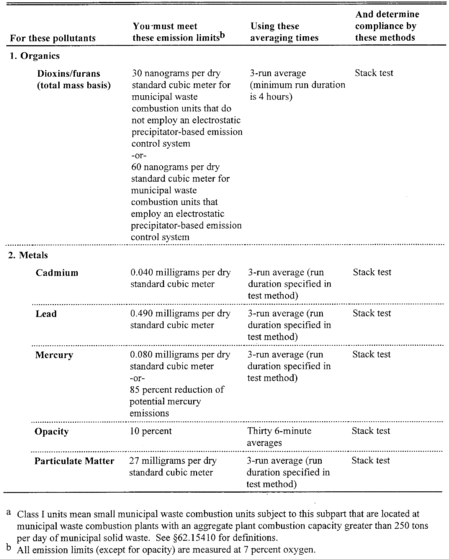

Table 3 to Subpart JJJ of Part 62 - Class I Nitrogen Oxides Emission Limits for Existing Small Municipal Waste Combustion Units a b c
40:10.0.1.1.2.62.1014.84.28 :
Table 3 to Subpart JJJ of Part 62 - Class I Nitrogen Oxides Emission Limits for Existing Small Municipal Waste Combustion Units a b c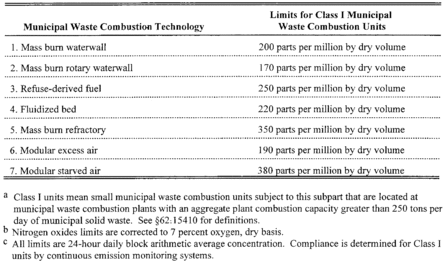
Table 4 to Subpart JJJ of Part 62 - Class II Emission Limits for Existing Small Municipal Waste Combustion Units a
40:10.0.1.1.2.62.1014.84.29 :
Table 4 to Subpart JJJ of Part 62 - Class II Emission Limits for Existing Small Municipal Waste Combustion Units a
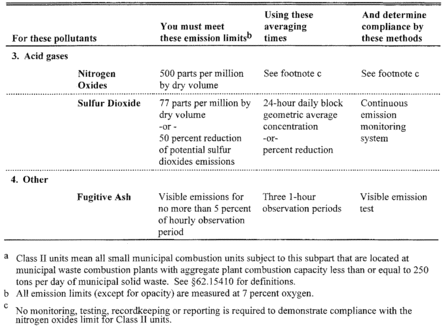
Table 5 to Subpart JJJ of Part 62 - Carbon Monoxide Emission Limits for Existing Small Municipal Waste Combustion Units
40:10.0.1.1.2.62.1014.84.30 :
Table 5 to Subpart JJJ of Part 62 - Carbon Monoxide Emission Limits for Existing Small Municipal Waste Combustion Units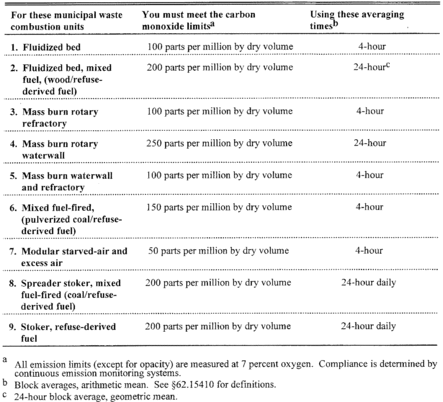
Table 6 to Subpart JJJ of Part 62 - Requirements for Validating Continuous Emission Monitoring Systems (CEMS)
40:10.0.1.1.2.62.1014.84.31 :
Table 6 to Subpart JJJ of Part 62 - Requirements for Validating Continuous Emission Monitoring Systems (CEMS)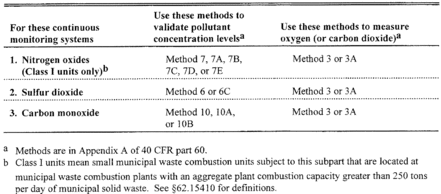
Table 7 to Subpart JJJ of Part 62 - Requirements for Continuous Emission Monitoring Systems (CEMS) a
40:10.0.1.1.2.62.1014.84.32 :
Table 7 to Subpart JJJ of Part 62 - Requirements for Continuous Emission Monitoring Systems (CEMS) a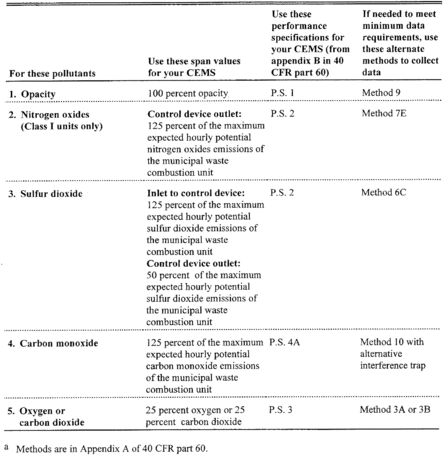
Table 8 to Subpart JJJ of Part 62 - Requirements for Stack Tests
40:10.0.1.1.2.62.1014.84.33 :
Table 8 to Subpart JJJ of Part 62 - Requirements for Stack Tests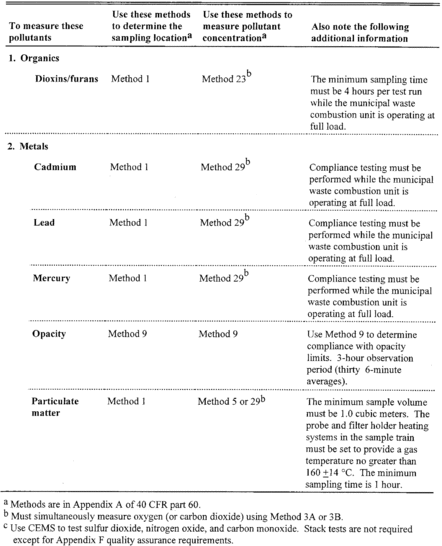
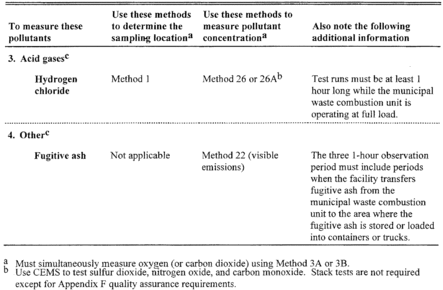
Table 9 to Subpart JJJ of Part 62 - Site-specific Compliance Schedules and Increments of Progress
40:10.0.1.1.2.62.1014.84.34 :
Table 9 to Subpart JJJ of Part 62 - Site-specific Compliance Schedules and Increments of Progress